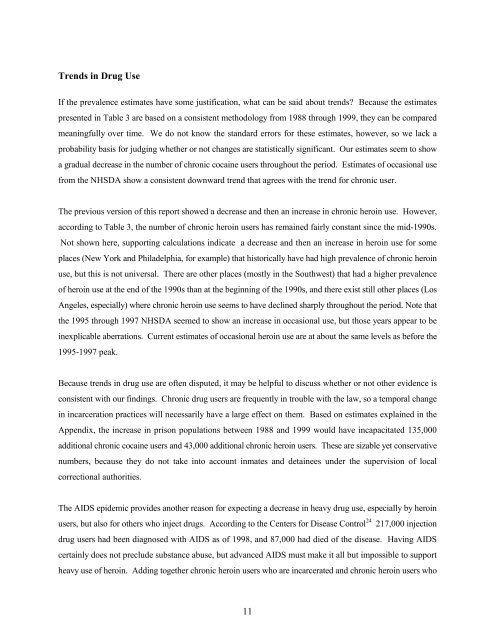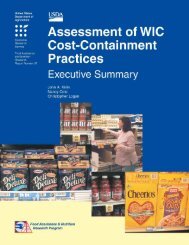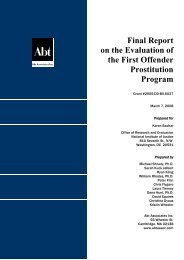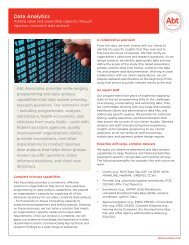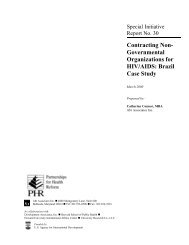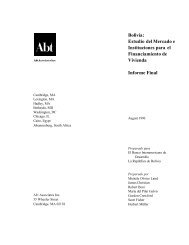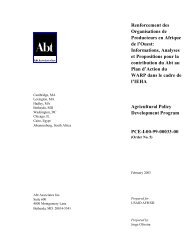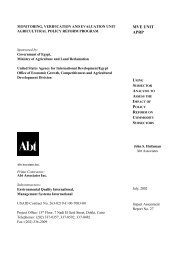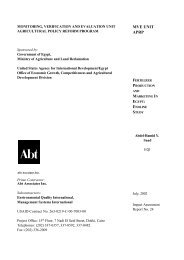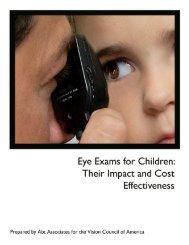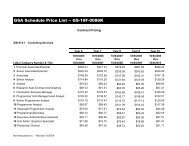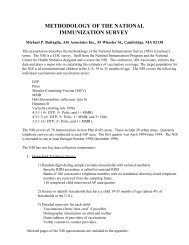What America's Users Spend on Illegal Drugs 1988-2000 - National ...
What America's Users Spend on Illegal Drugs 1988-2000 - National ...
What America's Users Spend on Illegal Drugs 1988-2000 - National ...
- No tags were found...
You also want an ePaper? Increase the reach of your titles
YUMPU automatically turns print PDFs into web optimized ePapers that Google loves.
Trends in Drug UseIf the prevalence estimates have some justificati<strong>on</strong>, what can be said about trends? Because the estimatespresented in Table 3 are based <strong>on</strong> a c<strong>on</strong>sistent methodology from <strong>1988</strong> through 1999, they can be comparedmeaningfully over time. We do not know the standard errors for these estimates, however, so we lack aprobability basis for judging whether or not changes are statistically significant. Our estimates seem to showa gradual decrease in the number of chr<strong>on</strong>ic cocaine users throughout the period. Estimates of occasi<strong>on</strong>al usefrom the NHSDA show a c<strong>on</strong>sistent downward trend that agrees with the trend for chr<strong>on</strong>ic user.The previous versi<strong>on</strong> of this report showed a decrease and then an increase in chr<strong>on</strong>ic heroin use. However,according to Table 3, the number of chr<strong>on</strong>ic heroin users has remained fairly c<strong>on</strong>stant since the mid-1990s.Not shown here, supporting calculati<strong>on</strong>s indicate a decrease and then an increase in heroin use for someplaces (New York and Philadelphia, for example) that historically have had high prevalence of chr<strong>on</strong>ic heroinuse, but this is not universal. There are other places (mostly in the Southwest) that had a higher prevalenceof heroin use at the end of the 1990s than at the beginning of the 1990s, and there exist still other places (LosAngeles, especially) where chr<strong>on</strong>ic heroin use seems to have declined sharply throughout the period. Note thatthe 1995 through 1997 NHSDA seemed to show an increase in occasi<strong>on</strong>al use, but those years appear to beinexplicable aberrati<strong>on</strong>s. Current estimates of occasi<strong>on</strong>al heroin use are at about the same levels as before the1995-1997 peak.Because trends in drug use are often disputed, it may be helpful to discuss whether or not other evidence isc<strong>on</strong>sistent with our findings. Chr<strong>on</strong>ic drug users are frequently in trouble with the law, so a temporal changein incarcerati<strong>on</strong> practices will necessarily have a large effect <strong>on</strong> them. Based <strong>on</strong> estimates explained in theAppendix, the increase in pris<strong>on</strong> populati<strong>on</strong>s between <strong>1988</strong> and 1999 would have incapacitated 135,000additi<strong>on</strong>al chr<strong>on</strong>ic cocaine users and 43,000 additi<strong>on</strong>al chr<strong>on</strong>ic heroin users. These are sizable yet c<strong>on</strong>servativenumbers, because they do not take into account inmates and detainees under the supervisi<strong>on</strong> of localcorrecti<strong>on</strong>al authorities.The AIDS epidemic provides another reas<strong>on</strong> for expecting a decrease in heavy drug use, especially by heroinusers, but also for others who inject drugs. According to the Centers for Disease C<strong>on</strong>trol 24 217,000 injecti<strong>on</strong>drug users had been diagnosed with AIDS as of 1998, and 87,000 had died of the disease. Having AIDScertainly does not preclude substance abuse, but advanced AIDS must make it all but impossible to supportheavy use of heroin. Adding together chr<strong>on</strong>ic heroin users who are incarcerated and chr<strong>on</strong>ic heroin users who11


